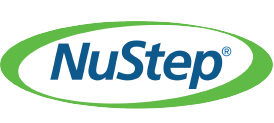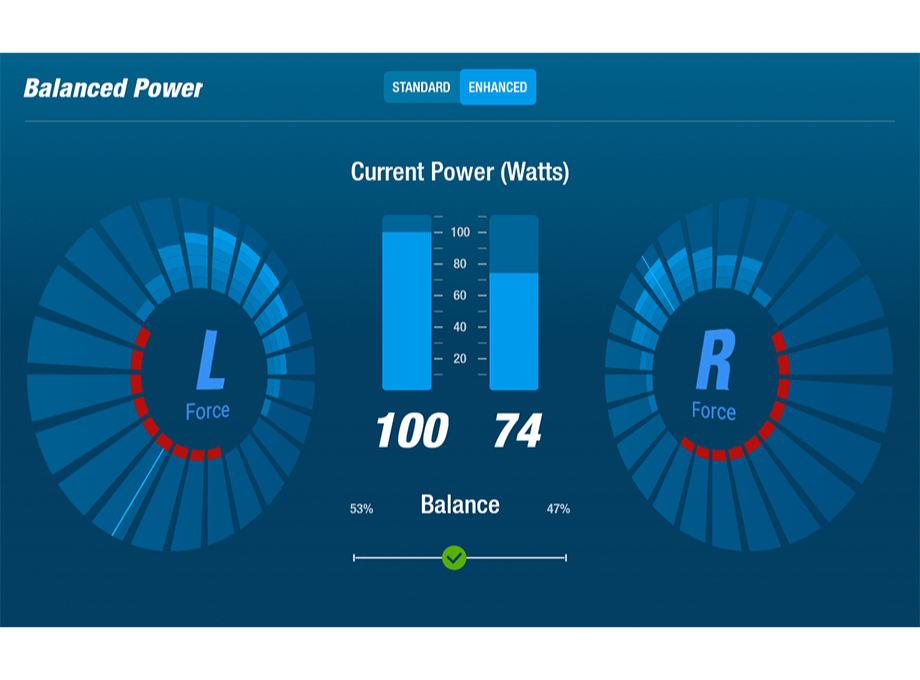Understanding NuStep’s Balanced Power App
Two of NuStep’s latest products, the UE8 Upper Body Ergometer and the RB8 Recumbent Bike, feature multiple program apps designed to engage and motivate users while they work out.
One of the apps, Balanced Power, also provides unique performance data by way of integrated force sensors. The sensors — located in the arm handles of the UE8 and the foot pedals of the RB8 — provide an objective measurement of the power and work performed by the left and the right limbs independently.
Defining Power
Power can be defined as the rate at which work is completed and may be reported in units of watts. The number of watts indicates how hard individuals are working while walking, climbing stairs, exercising, etc. The more power they produce, the higher the watts value.
Capturing Power
Through the use of sensitive electro-mechanical velocity and acceleration along with bilateral force sensors that measure performance data, Balanced Power enables identification of individual limb strength and power deficits (and gains) as well as left limb versus right limb asymmetry. The employment of dedicated sensors offers superior accuracy over a commonly employed method in the cardio equipment industry that relies on inferred estimates of human power output from measures of electronic braking power.
What Causes Asymmetry?
Asymmetrical movement patterns are common when an injury or surgery results in musculoskeletal impairments. The changes in body mechanics can place abnormal stress on other parts of the body. If the asymmetrical movement patterns and/or deficits are not identified and corrected, they may lead to injury and/or disfunction.
The Power of Instant Feedback
That performance data is presented in real-time, side-by-side graphical and numerical biofeedback. The Balanced Power app also shows the relative balance of the right vs left limb over the course of the exercise session.
In addition to informing users about their performance, these visual cues can help with neuromuscular learning which works to improve the connection between the brain and muscles. As a result, users may develop greater awareness of their limb symmetry, and increased control over their voluntary movement and physical performance.

